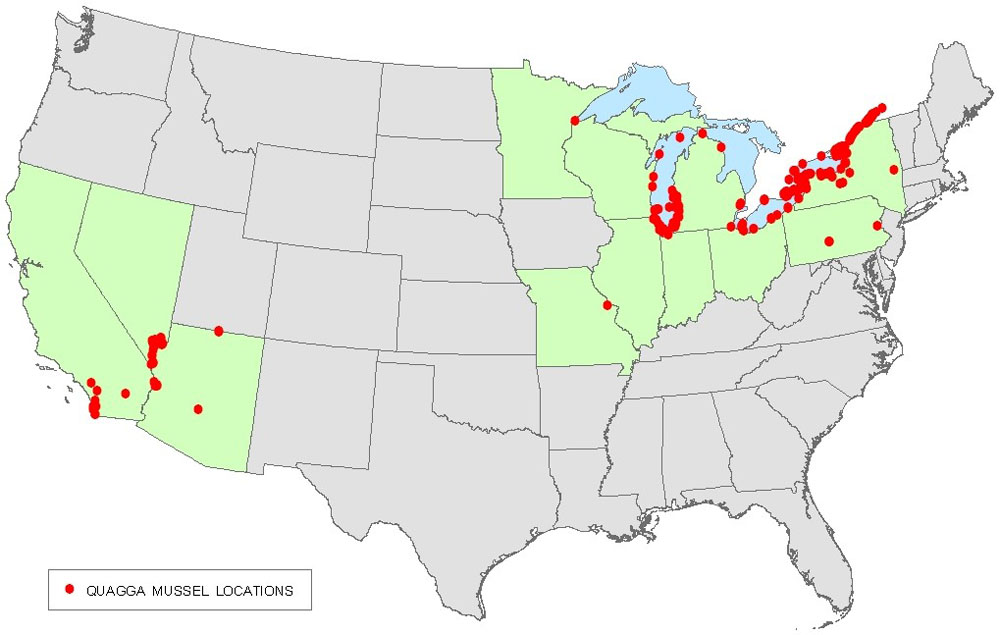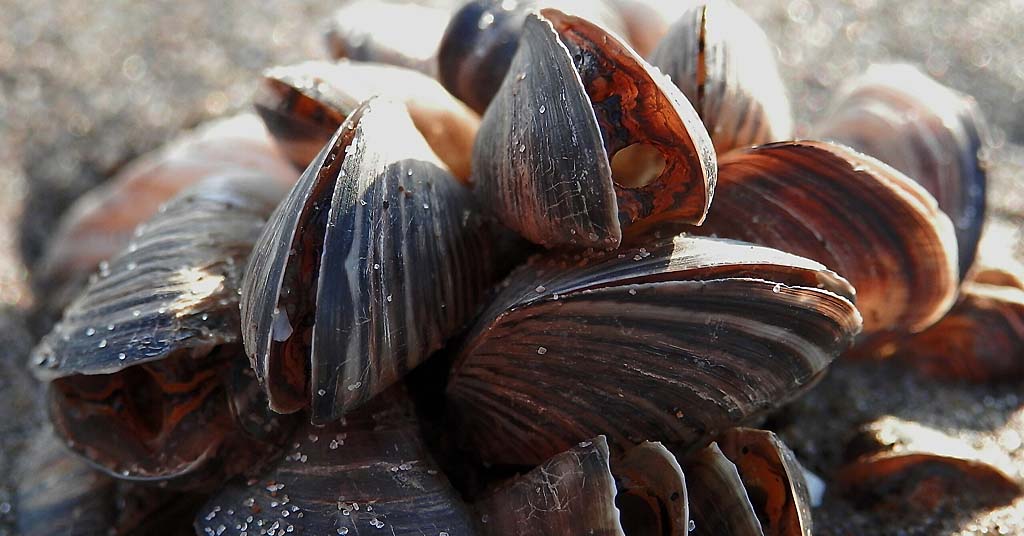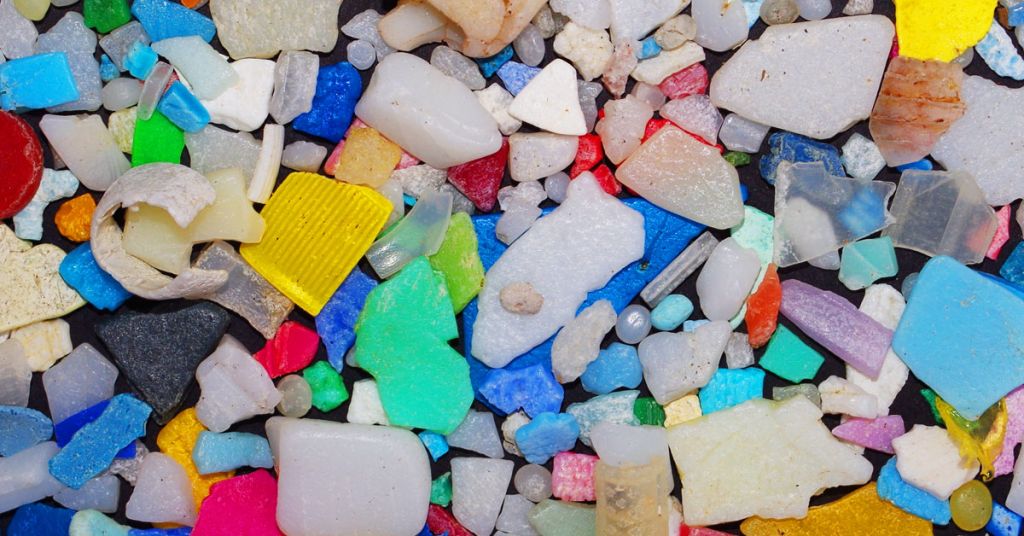Idaho’s “unprecedented” plan to treat portions of the river for quagga mussels will also cause significant fish mortality

Snake invaders: Quagga mussels caught in a bottom trawl in the Great Lakes. Photo: Andrea Miehls/USGS
By Kendra Chamberlain. October 10, 2023. The state of Idaho is implementing an aggressive molluscicide treatment program in hopes of halting the spread of a small but dangerous population of invasive freshwater quagga mussels detected last month in Snake River near Twin Falls.
Idaho State Department of Agriculture (ISDA) is treating three sections of the river with the chelated copper product Natrix over a 12-day period.
The treatment is also expected to kill most of the aquatic life, plants and fish along the six-mile stretch of water and could result in more fatalities downstream and in the coming weeks.
ISDA Director Chanel Tewalt said during a town hall meeting on Oct. 1 that the state has undertaken “probably the most aggressive approach that’s ever been tried in the United States” to eradicate the infestation.
The state’s Department of Fish and Game is bracing for significant fish mortality as a result.
Quagga mussels are native to Ukraine’s Dnieper River drainage, but have colonized water bodies across Europe and North America.
In the United States, the mussels were first detected in the Great Lakes in the 1980s, covering nearly every surface available to them and forever altering those aquatic ecosystems.
Cousins to the Dreissenid Zebra mussels, quagga mussels are tiny mollusks that can colonize freshwater substrates in dense concentrations of up to 7,790 mussels per square meter.
The mussels can live out of water for three-to-five days before dying. They spread across waterways on recreational boats that aren’t properly cleaned and dried.
Quagga mussels outcompete native freshwater mussels for food, and even attach to native mussel shells, killing them.
ISDA detected a plume of mussels larvae, called veligers, in September, as part of the routine monitoring the state conducts.
After more investigation, a diver working for the department was able to locate a single adult mussel, smaller than a fingernail, located about 16 feet underwater. Female quagga mussels can release up to 500,000 eggs per year, which float freely and can easily spread throughout waterways.
ISDA told Columbia Insight the department doesn’t know how the species reached the Snake River, or how long the species was present in river before detection.
Treatment plan: Collateral damage
Environmental group Idaho Conservation League (ICL) is worried the treatment plan may set a dangerous precedent for how the state deals with future quagga mussel infestations.
“ICL is concerned about this creating an expectation that anywhere and everywhere that quagga mussels show up, that this treatment is our approach—which isn’t a realistic approach for all places in Idaho, especially thinking about places where bull trout, salmon and other endangered or sensitive species are,” an ICL spokesperson told Columbia Insight.
The department’s Plants Division section manager Jeremey Varley said during the town hall meeting the department plans to utilize a second molluscicide called niclosamide as “a spot treatment” following the copper treatment.
Varley said the state may also use the biopesticide pseudomonas targeting the quagga mussels in the spring if needed.
The possible use of niclosamide is also worrisome to the ICL. The pesticide isn’t currently approved for use in the United States.
“They would have to get special approval to use niclosamide,” the spokesperson said. “ICL is seeking more information on its use and has not yet had our questions answered.”
Dewalt said the copper treatment, which will affect less than 1% of the Snake River, is expected to impact aquatic life and fish populations, but not drinking water supplies.

Map: Wikimedia Commons
Idaho Department of Game and Fish conducted a fish population survey last week to help them respond to inevitable fish kills as a result of the treatment. The department may also translocate adult fish after the treatment and stock hatcheries if needed.
“Biologists will be monitoring the effects of this unprecedented treatment and working to determine the best course of action afterward,” the department said in a press release.
Meanwhile, Idaho’s neighboring states are now on high alert.
Oregon Department of Fish and Wildlife’s Rick Boatner told Columbia Insight the department has increased sampling in certain water bodies and is increasing inspections of watercraft coming from the Twin Falls area.
Washington’s Department of Fish and Wildlife said in a blogpost the agency is redirecting staff and increasing watercraft inspections along its portion of Snake River.
Wyoming has also upped its watercraft inspections.










